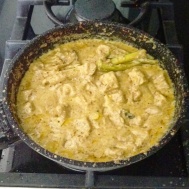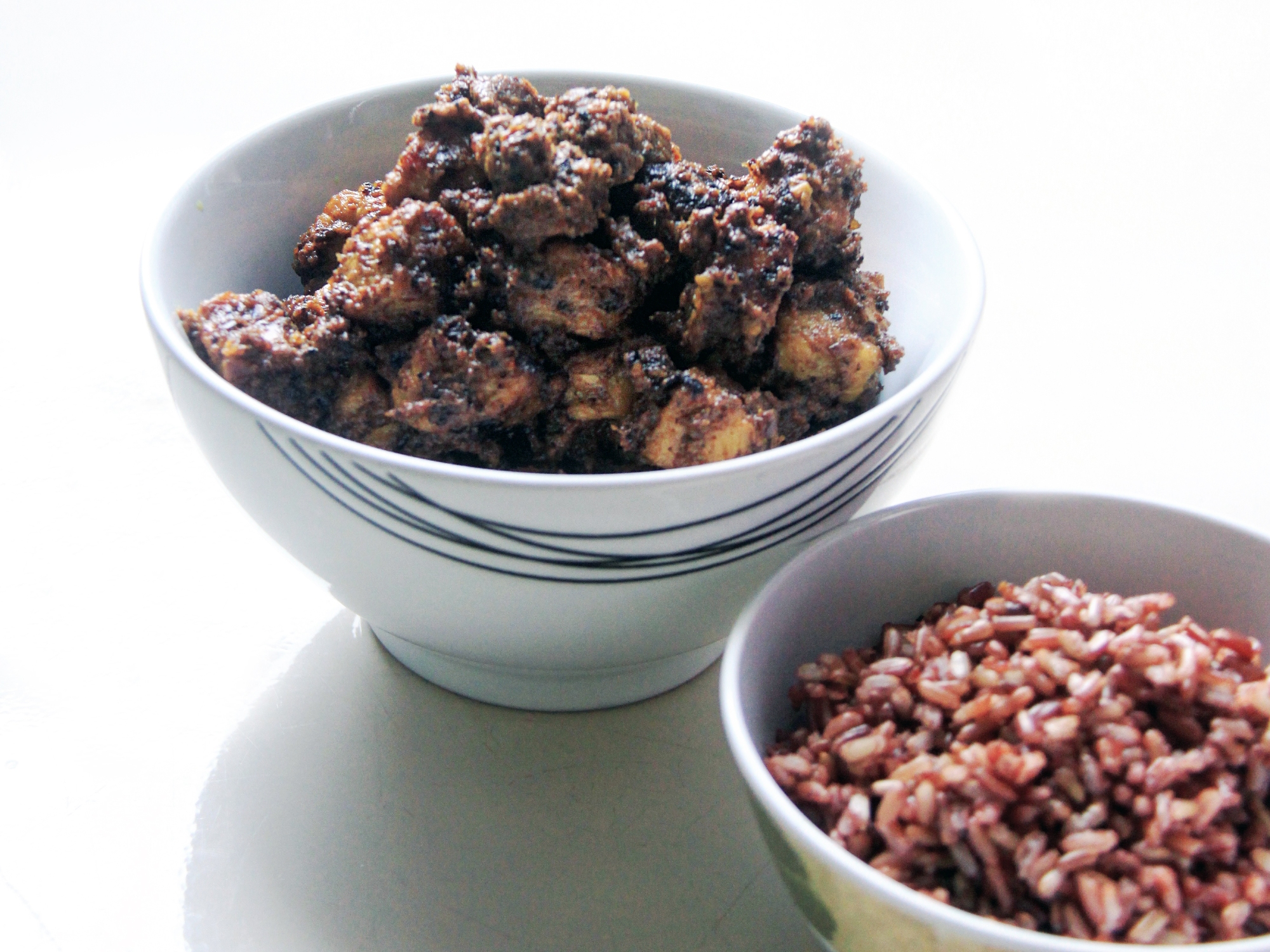Prep time: 10 minutes
Cooking time: 1 hour
Serves 3
I didn’t just make up the title of this post – a poll by CNN proved that rendang really is one of the world’s most delicious food. Well, at least on 2011 it was. Rendang is a classic Indonesian dish traditionally made with beef, but I prefer using tempe because it’s simpler, healthier and faster to cook. It is one of the trickiest dishes I’ve tried to make, mainly to its long list of ingredients and the technique needed to achieve classic rendang’s signature color and texture.
Ingredients
1 block of tempe (or beef)
400ml coconut milk
Tamarind paste (or any kind of vinegar) to taste
Salt, sugar and pepper to taste
A dash of cooking oil
Yellow base paste (bumbu dasar kuning):
1 tbsp coriander seed (roasted)
2 candlenut/kemiri (roasted)
10 shallots
8 cloves of garlic
2 cm ginger
2 cm of turmeric (or 1 tbsp ground turmeric)
Red chilies
Aromatics:
2 cm galangal (lengkuas)
5 kaffir lime leaves (daun jeruk)
2 bay leaves (daun salam)
1 stalk of lemongrass (sereh)
Can’t find tempe? Substitute with potatoes instead.

Now, you may notice that the huge ingredient list is divided into three. The aromatics are the ingredients that people may find difficulty finding outside Asia, and they are totally skippable. They provide amazing and delicious aroma, though don’t really add much flavor into the dish. I sometimes have problems finding them myself, and the flavor can still be spot-on without them. On the other hand, The yellow base paste is a must-use paste for this dish. In fact, many Indonesian dishes require this kind of base to make them.
Steps to make my rendang dish:
- Roast coriander seeds and candlenut, then grind them smoothly with mortal and pestle or a food processor. Then add in the rest of the yellow paste ingredient and grind until smooth. It is important to process the roasted ingredients first because of their dry nature and small in size – they tend to not get ground properly when mixed with the rest of the ingredients.
- Sauteé the paste in oil until it’s fragrant, then add in all the aromatics and a bit of water to prevent burning. Let them cook until fragrant.
- Add in coconut milk, tamarind paste (or vinegar), salt, sugar and pepper. Always add a little amount first – you can always add but you can never take back if you put too much.
- When your curry is boiling, add in tempe. At first rendang is yellow in color (pictured), but it will brown due to caramelization during cooking process.
- Reduce the mixture until dry. Cooking rendang is different than Indonesian curry because unlike curry, you can let the coconut milk to split because you want it to reduce it to almost nothing.
- Another thing you want to achieve is the brown color from all the sugar caramelizing in the mixture. The first time I attempted rendang I was so frightened of burning it, the mixture stayed yellow and it never turned brown – it just became a really thick curry. You can definitely let the rendang sit on low heat until the coconut milk splits, and then the oil from the coconut milk will start frying the rendang and help you develop the dark brown color. (Be careful though, charring is different than burning, always watch your food while cooking).
Once your rendang is brown and reduced, it is ready to be served. It is best eaten hot with rice. It’s a tricky dish so don’t worry if you don’t get it the first time – I certainly didn’t.

